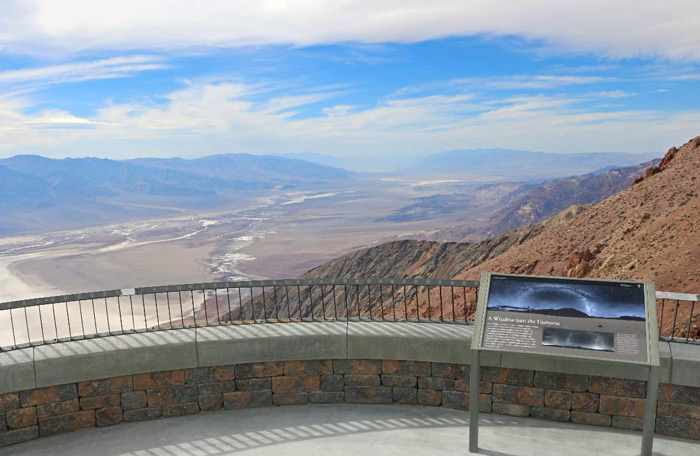
Dantes View is a 5,500-feet-high viewpoint overlooking Death Valley National Park.
NPS photo
Park biologists suspect toxic algae is the cause
September 12, 2024 - DEATH VALLEY, Calif. – Eleven burros died in near Owls Hole Spring in Death Valley National Park. The cause of death is under investigation, but the National Park Service (NPS) suspects a harmful algae bloom was to blame.
The NPS warns that the water in Owls Hole Spring should be considered unsafe for humans or pets to drink or touch. In addition, people and pets should not handle any of the carcasses. Park rangers installed a warning sign.
Algae and cyanobacterial occur naturally in water and are more likely to grow into a harmful algae bloom when water is slow-moving, warm, and contains high levels of nitrogen and phosphorous, such as from fertilizer or sewage, according to the Centers for Disease Control (CDC).
All three of those conditions existed at Owls Hole Spring this summer where the water is stagnant. Death Valley experienced its hottest summer on record this year and feral burros defecated in and near the water.
So far only dead burros have been found, but other animals were likely affected. No pupfish live in this spring.
“I hate to see any animal suffer,” said Superintendent Mike Reynolds. “The National Park Service is working to remove feral burros from Death Valley, for their own safety and to reduce impacts to native wildlife.”
Burros are not native to Death Valley. The park’s estimated 4,000 burros are descendants of animals released by miners decades ago. The NPS seeks to relocate feral burros from the park. Due to lack of funding, roundups have not been conducted on a large scale since 2005. The Bureau of Land Management worked with the NPS to remove 43 burros in recent years. The nonprofit Peaceful Valley Donkey Rescue has captured 256 burros from the park since 2018. The park has funding to resume roundups in fiscal year 2026.
Source: NPS








